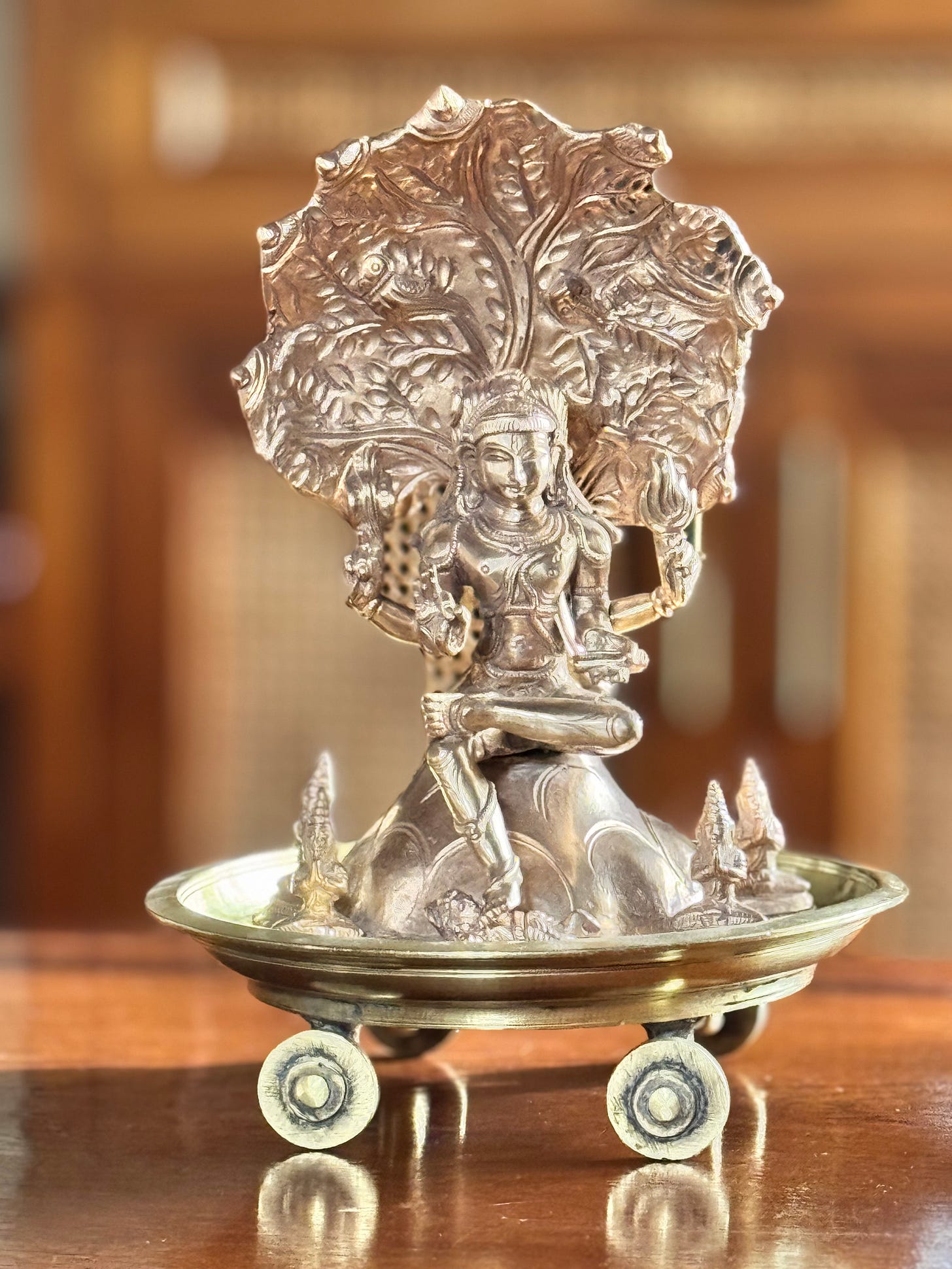MS is a dear friend
much younger than me ; spiritually a very evolved person ...
many years back he had talked about the 12 year relationship between the Guru and the shisya with me ....
there is no external Guru first of all, he began ...
the Guru is within you ..
when the "I" decides to stop identifying with the body and the mind and starts gravitating towards "That' ( the universal principle ) the Guru - Shisya interaction begins ....
and once the 'I" decides to identity with 'That' ...the 'awakening' or 'enlightenment' or call it what you want happens ...
it is now after this realisation that the Shishya - the "I" starts the 12 years relationship with the Guru - the "That' ... the universal principle that which is also within you , begins ....
if after this 'probation' period of 12 years the 'I" decides to merge with 'That' then the individual moves into a stage of sanyas ......
but sanyas that doesn’t mean he has to go somewhere and become a recluse ... he can very well resume his usual normal life ...
but now he is 'in awareness' ...
everything is the same, his follies and foibles remain, his strength and weakness remains the same , the good and bad in him remains ...
but there is one subtle change that will have taken place ....
one starts to live his or her life with with honesty and in harmony with all his follies and foibles , his strength and weakness , his good and bad ...
Anyone who completes this rite of passage is considered a Vidya-snataka (literally, bathed in knowledge, or showered with learning), and symbolized as one who had crossed the ocean of learning, he said ...
now the 'graduates' has to take care of themselves and pursue Dharma, Artha and Kama to the best of their abilities.
he laughed ....
see you in the evening for dinner 'sir' he said ....
(he has this habit like Jiddu to address everyone as 'sir' !)
The Samāvartana is a traditional rite of passage (saṃskāra) in the Sanātana Dharma marking the completion of Brahmacharya Āśrama—the stage of life devoted to studenthood and Vedic learning under a Guru. It signifies a graduation ceremony, after which the student becomes eligible to enter the Gṛhastha Āśrama (householder life) and take up responsibilities in society. Samāvartana literally means “returning home” (sam + ā + vṛt), indicating the student’s return from the gurukulato society after completing formal education.
It is also referred to as Snātaka Karma ("the rite of the one who has bathed"), because the student performs a ritual bath (snāna) as a symbol of inner purification and readiness to enter the next stage. The central act of the ceremony is the ritual bath, sometimes in a sacred river or with recitation of specific mantras. This is not just a physical cleansing, but symbolic of mental and moral purification. The student expresses gratitude by offering a dāksinā (gift) to the teacher—often a token of devotion, not necessarily material wealth.
The Shikṣāvallī is the first section (vallī) of the Taittirīya Upaniṣad, which itself is part of the Krishna Yajurveda. It is primarily instructional in nature and deals with phonetics and pronunciation (hence śikṣā = phonetics), ethical and moral education, duties of a student, initiation and graduation ceremonies (like upanayana and samāvartana), mantras for daily Vedic recitation and the final guidance from the Guru as the student leaves the Gurukula.
So, Shikṣāvallī is essentially a manual for Vedic students, focusing on both correct chanting and righteous conduct. It contains 12 Anuvākas (chapters). The Eleventh Anuvāka of Shikṣāvallī is one of the most beloved and much quoted passages in Hindu tradition—especially in convocation or farewell addresses. It contains the Guru’s final instructions (upadeśa-vākya) to the departing student at the Samāvartana ceremony (completion of student life). (from Taittirīya Upaniṣad, Śikṣāvallī, 1.11)
सत्यं वद | धर्मं चर | स्वाध्यायान्मा प्रमदः ||
Satyam vada. Dharmam chara. Svādhyāyān mā pramadaḥ.
"Speak the truth. Follow Dharma. Do not neglect self-study."
मातृदेवो भव । पितृदेवो भव । आचार्यदेवो भव । अतिथिदेवो भव ॥
Mātṛdevo bhava. Pitṛdevo bhava. Ācāryadevo bhava. Atithidevo bhava.
“Regard your mother as a deity. Regard your father, teacher, and guest as deities.”यान्यनवद्यानि कर्माणि । तानि सेवितव्यानि । नो इतराणि ॥
Yāny anavad-yāni karmāṇi, tāni sevitavyāni, no itarāṇi.
“Only those deeds that are blameless should be performed, not others.”
ये के चारुमच्छ्रेयांसो ब्राह्मणाः । तेषां त्वयाऽऽसन्येन प्रश्वसितव्यम् ॥
Ye ke cārumacchreyāṁso brāhmaṇāḥ, teṣāṁ tvayāsan-yena praśvasitavyam.
“Whatever noble Brahmins there are, emulate their conduct and live in humility.”
These are known as the Upadeśa Vākyas – guiding principles for the rest of life. After Samāvartana, the individual is now qualified to marry, take up family and societal duties, transit to Gṛhastha Āśrama and even perform yajñas and other rituals independently.
While Samāvartana is rarely performed in its classical form today, the idea remains relevant: Graduation ceremonies in traditional Veda-pāṭhaśālās still include a symbolic bath and farewell. The ethical teachings—truthfulness, self-restraint, service to parents and teachers—are still part of Hindu education ideals. In a broader sense, convocation ceremonies in universities today echo some of the symbolic functions of Samāvartana.




